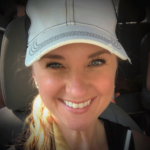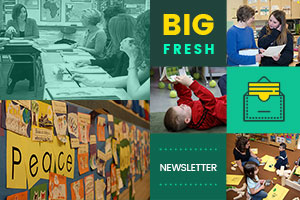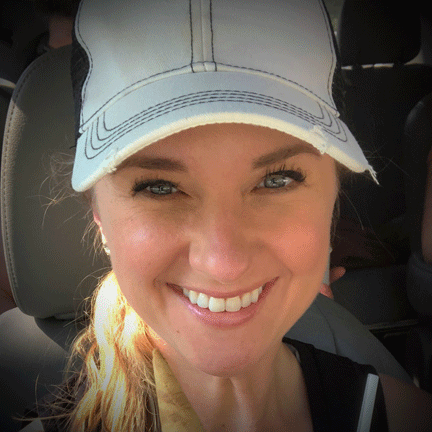Between stimulus and response there is a space. And in that space is our power to choose our response. In our response lies our growth and our freedom.
—Stephen Covey, summarizing from an unnamed source
Choose Your Response
Wednesday. The middle of the week. This was always the day during my childhood family vacations when I felt things change. Saturday through Tuesday, I would feel energized and full of life, building sandcastles with my sisters on our daily visits to the beach. We were making plans and putting them into action.
Then poof! Wednesday would show up, and it was as if a cloud drifted over me for the remainder of our vacation week. Building a sandcastle from the wet sand by the shore just didn’t have the same feel as earlier in the week. You see, the end of our vacation was in sight. What was the sense in having fun when our vacation was ending soon? I recall sitting next to my mother in our beach chairs, sharing how down I was feeling at the continuous thought of our vacation coming to an end. Her response to me always sounded something like this: Live in the moment and be your best self in the moments we still have!
Stephen Covey wrote that he was captivated by the idea that “Between stimulus and response there is a space. And in that space is our power to choose our response. In our response lies our growth and our freedom.”
Our lives are filled with starts and stops, pauses and breaks. When we know change is ahead, we may think, Why put in all the effort now if things are just going to change? Whether it be the uncertainty of our teaching position or the upcoming transition to a new curriculum, we have the power to choose how we respond. We owe it to ourselves to continue giving each day everything we’ve got despite the impending change or the future unknown.
We can choose to phone it in and listlessly go through the motions. Or we can choose to dial it in and give it our best performance and effort. Let’s use our power for the latter and respond with confidence, competence, and clarity in each moment we still have in sight.
Wednesdays. The middle of the week. This is the day during my family vacations as an adult when I watch my children splashing in the pool, smile, and think, We still have three more days of vacation together!
This week’s collection of articles is about choosing playfulness in the learning process and holding on to joy in the hard moments—plus more, as always.
Heather Fisher
Instructional Coach

Heather Fisher is a K–4 instructional coach in Massachusetts. She also has experience as a first-grade teacher, second-grade teacher, reading specialist, and literacy coach. In her everyday coaching practice, she seeks to radiate positivity in her mission to celebrate the small things as students and teachers continue in their daily growth.
Bitsy Parks reminds us of the importance of taking time to talk, ask questions, and share thinking in a circle format. Community circle is a practice that strengthens an inclusive community.
Join Ruth Ayres and Stephanie Affinito for The 10-Minute Reset That Keeps Coaches From Burning Out. In just 45 minutes, you’ll experience what it feels like to:
- pause the noise with a guided writing prompt that clears your mental clutter.
- restore energy by learning the simple 10-minute habit that builds margin into your day.
- reset in real time so you walk away calmer, more focused, and in control.
Choose the time that works for you.
- Tuesday | Oct. 28 | 11:00 a.m. (EDT)
- Tuesday | Oct. 28 | 2:00 p.m. (EDT)
- Saturday | Nov. 1 | 9:00 a.m. (EDT)
- Thursday | Nov. 6 | 3:15 p.m. (EST)

New members-only content is added each week to the Choice Literacy website. If you’re not yet a member, click here to explore membership options.
Gretchen Schroeder makes a case for offering creative opportunities for high school students to play with language. She names three components to ensure a creative, playful experience is successful: student choice, ownership, and inspiring invitations.
Although background knowledge may feel like an “old concept,” Leigh Anne Eck offers fresh and important considerations to lift students’ ability to comprehend complex texts.
Choice Numeracy | Mallory Messenger encourages us to broaden our thoughts about math tasks: It’s not about using that one task; it’s about choosing a task that will conjure up the mathematical ideas and thinking we want our students grappling with. Mallory shows how to be purposeful in the questions and tasks we ask students to complete, and offers an array of thinking stems to adjust to the wide range of needs in a classroom.
Many elementary teachers begin the school year with the creation of self-portraits. Mandy Robek carries the work from the initial creation throughout the entire school year to strengthen her learning community.

New members-only content is added each week to the Choice Literacy website. If you’re not yet a member, click here to explore membership options.
Stephanie Affinito shares the evolving research about the power of writing to strengthen our emotional well-being. It makes sense to harness this in our own coaching lives to better support ourselves and the teachers we work with. Here are seven ideas to get started in your own coaching practices and ideas that you can then share with teachers to support their mental wellness, too.
Gigi McAllister candidly shares the process for sharing school-wide monthly read aloud books based on wellness themes. Like most worthwhile endeavors, it took time to create a smooth system. Gigi shares their system, but more importantly offers authentic advice for making a whole-school project meaningful.
Vivian Chen is inspired by Ingrid Fetell Lee to consider a joyful toolkit for educators. While there can be a certain draw to wallowing in killjoys in education, ultimately, we need to disrupt the downward spiral for our own mental wellness.
Quote It:
The creation of something new is not accomplished by the intellect but by the play instinct.
—Carl Jung
That’s all for this week!



